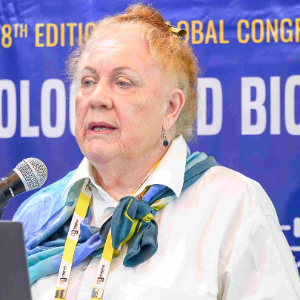Chloroplast Genetic Engineering
Chloroplast genetic engineering involves modifying the chloroplast genome to introduce new traits in plants, such as enhanced photosynthesis, pest resistance, or production of valuable compounds. Since chloroplasts contain their own DNA, which is inherited maternally, genetic modifications in chloroplasts do not transfer through pollen, reducing environmental risk. Chloroplast engineering has applications in creating biofortified crops and producing pharmaceuticals and biodegradable plastics within plant tissues. Additionally, because chloroplasts can produce proteins in large quantities, they are ideal for developing cost-effective and sustainable plant-based biomanufacturing systems, contributing to advances in both agriculture and biotechnology.

Mohammad Babadoost
University of Illinois, United States
Mary Cole
The University of Melbourne, Australia
Valasia Iakovoglou
UNESCO chair Con-E-Ect, International Hellenic University, Greece
Satya S S Narina
Virginia State University, United States
Sara Hailemariam
Purdue University, United States
Midhat Mahboob
Lincoln University, New Zealand


Title : Exploring the genetic diversity in tannin-rich forages to explain the large intra species variability in tannin content
Selina Sterup Moore, Aarhus University, Denmark
Title : Isolation and functional properties of biomolecules of plants and its application
Balagopalan Unni, GEMS Arts & Science College (Autonomous), India
Title : Primed for the future: PGPR and the promise of sustainable, heritable crop resilience
Prashant Singh, Banaras Hindu University (BHU), India
Title : Revealing allelic variations in candidate genes associated with grain yield under salinity stress between two contrasting rice genotypes
Nisha Sulari Kottearachchi, Wayamba University of Sri Lanka, Sri Lanka
Title : Adaptive strategies of Aristida L. species across ecological zones of Pakistan: Linking soil characteristics with morphological and physiological traits
Iram Ijaz, University of Agriculture Faisalabad Pakistan, Pakistan
Title : Ethnobotanical survey and abundance of weeds in selected Manihot esculenta (cassava) Crantz farms in Osun state, Nigeria
Dada Caleb Mayokun, University of Ibadan, Nigeria